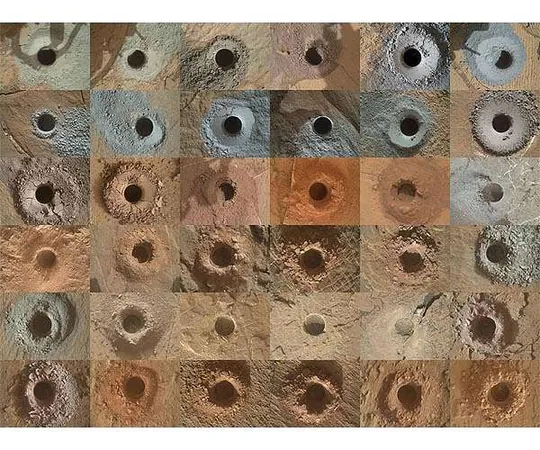
Unlocking Mars' Mysteries: What Sample Returns Could Reveal About the Red Planet's Evolution
2025-01-13
Author: Mei
Unlocking Mars' Mysteries
Mars, often dubbed the Red Planet, presents an intriguing combination of geological features that remind researchers of both Earth and the Moon. This unique geological tapestry has become a focal point for scientists eager to understand Mars’ evolutionary journey and its parallels with our own planet.
Recent advancements in Martian studies have predominantly come from spacecraft observations and the analysis of Martian meteorites—space rocks that were ejected from Mars and later landed on Earth, primarily in arid regions like deserts and Antarctica. These meteorites are not uniform; they are classified mainly into two types: shergottites and nakhlites. Each type provides contrasting insights into Mars’ complex geological history and evolution.
Groundbreaking Studies and Sample Returns
A groundbreaking study published in the Proceedings of the National Academy of Sciences showcases the potential of sample return missions. Researchers at Lawrence Livermore National Laboratory (LLNL) highlight the crucial need for directly analyzing Martian samples taken from specific locations on the planet's surface. As LLNL researcher Lars Borg states, "Using tiny samples to infer the entire evolutionary history of Mars is akin to predicting the existence of mountain ranges from oceanic samples. We must distinguish between widespread geological features and localized anomalies."
Understanding Shergottites and Nakhlites
Shergottites, which are thought to be between 200 and 600 million years old, are basaltic in nature and exhibit geochemical properties similar to those of the Moon. These findings suggest that Mars developed its core, mantle, and crust early on and has remained relatively geologically stagnant since. Conversely, the nakhlites, which date back approximately 1.3 billion years, imply a more dynamic geological history, indicating that Mars was geologically active much earlier in its history, akin to the processes observed on Earth.
NASA's Mars Sample Return Campaign
In preparation for NASA’s ambitious Mars Sample Return Campaign—a mission designed to return samples collected by the Perseverance rover—LLNL has been upgrading its analytical facilities. Thomas Kruijer, another LLNL researcher, emphasizes the laboratory's commitment to leveraging its analytical prowess not only to understand Mars but also to support the upcoming Artemis program, which aims to return humans to the Moon.
Implications for Earth's History and Life Beyond
Studying these samples in detail will help scientists build a more comprehensive model of Mars’ formation and evolution. This knowledge could offer invaluable insights not only into Earth’s past but also into the broader mechanisms that shape terrestrial planets across our solar system.
As Borg poignantly notes, "Studying the only place in the solar system that bears even a slight resemblance to Earth could illuminate our own world's history, explain the origins of civilization, and even help us ponder the question of whether we are alone in the universe."
As we stand on the brink of a new era in planetary science, the forthcoming sample returns could catalyze a paradigm shift in our understanding of Mars—and perhaps, our understanding of life beyond Earth itself. Stay tuned, as the next decade promises to unveil secrets that could change our collective perspective on planetary evolution forever!
 Brasil (PT)
Brasil (PT)
 Canada (EN)
Canada (EN)
 Chile (ES)
Chile (ES)
 Česko (CS)
Česko (CS)
 대한민국 (KO)
대한민국 (KO)
 España (ES)
España (ES)
 France (FR)
France (FR)
 Hong Kong (EN)
Hong Kong (EN)
 Italia (IT)
Italia (IT)
 日本 (JA)
日本 (JA)
 Magyarország (HU)
Magyarország (HU)
 Norge (NO)
Norge (NO)
 Polska (PL)
Polska (PL)
 Schweiz (DE)
Schweiz (DE)
 Singapore (EN)
Singapore (EN)
 Sverige (SV)
Sverige (SV)
 Suomi (FI)
Suomi (FI)
 Türkiye (TR)
Türkiye (TR)
 الإمارات العربية المتحدة (AR)
الإمارات العربية المتحدة (AR)